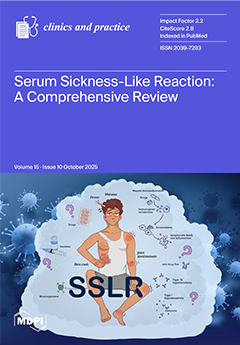Background: Pediatric asthma is a multifactorial condition influenced by environmental, biological, and social determinants. The COVID-19 pandemic introduced new variables that may have affected the severity and management of asthma in children and adolescents, particularly through changes in healthcare access, treatment adherence, and
[...] Read more.
Background: Pediatric asthma is a multifactorial condition influenced by environmental, biological, and social determinants. The COVID-19 pandemic introduced new variables that may have affected the severity and management of asthma in children and adolescents, particularly through changes in healthcare access, treatment adherence, and exposure to environmental risk factors.
Objective: To evaluate the association between asthma severity and various factors including nutritional status, corticosteroid use, COVID-19 vaccination, and pollutant exposure before and during the COVID-19 pandemic in a pediatric population.
Methods: A retrospective analysis was conducted using 307 medical records of patients aged 3 to 17 years. Data collected included sociodemographic characteristics, nutritional indicators, history of corticosteroid use, vaccination status against COVID-19, and exposure to environmental pollutants. Asthma severity was assessed using the pulmonary score, and multiple statistical analyses, including logistic regression using the Bayesian Logistic Regression Model (BLRM), were employed to identify significant associations.
Results: The analysis revealed a statistically significant impact of the pandemic on hospitalization rates (
p = 0.0187) and the use of corticosteroids (
p = 0.009), indicating changes in asthma management during this period. Notable differences were observed in the geographic distribution of mild versus severe asthma cases prior to the pandemic, associated with nutritional status and gender (
p = 0.018). During the pandemic, breastfeeding history, body weight, and hospitalization emerged as significant predictors of asthma severity (
p < 0.05). In addition, breastfeeding in young children (aged 3 to 6 years) and hospitalization were strongly associated with pulmonary scores, with significance values of 0.022 and 0.012, respectively, as identified by the BLRM.
Conclusions: These findings suggest that the pandemic context influenced both the clinical course and management of pediatric asthma. Preventive strategies should consider individual and environmental factors such as nutrition, early-life health practices (e.g., breastfeeding), and equitable access to appropriate asthma care and vaccination. Tailoring pediatric asthma management to these variables may improve outcomes and reduce disparities in disease severity.
Full article






